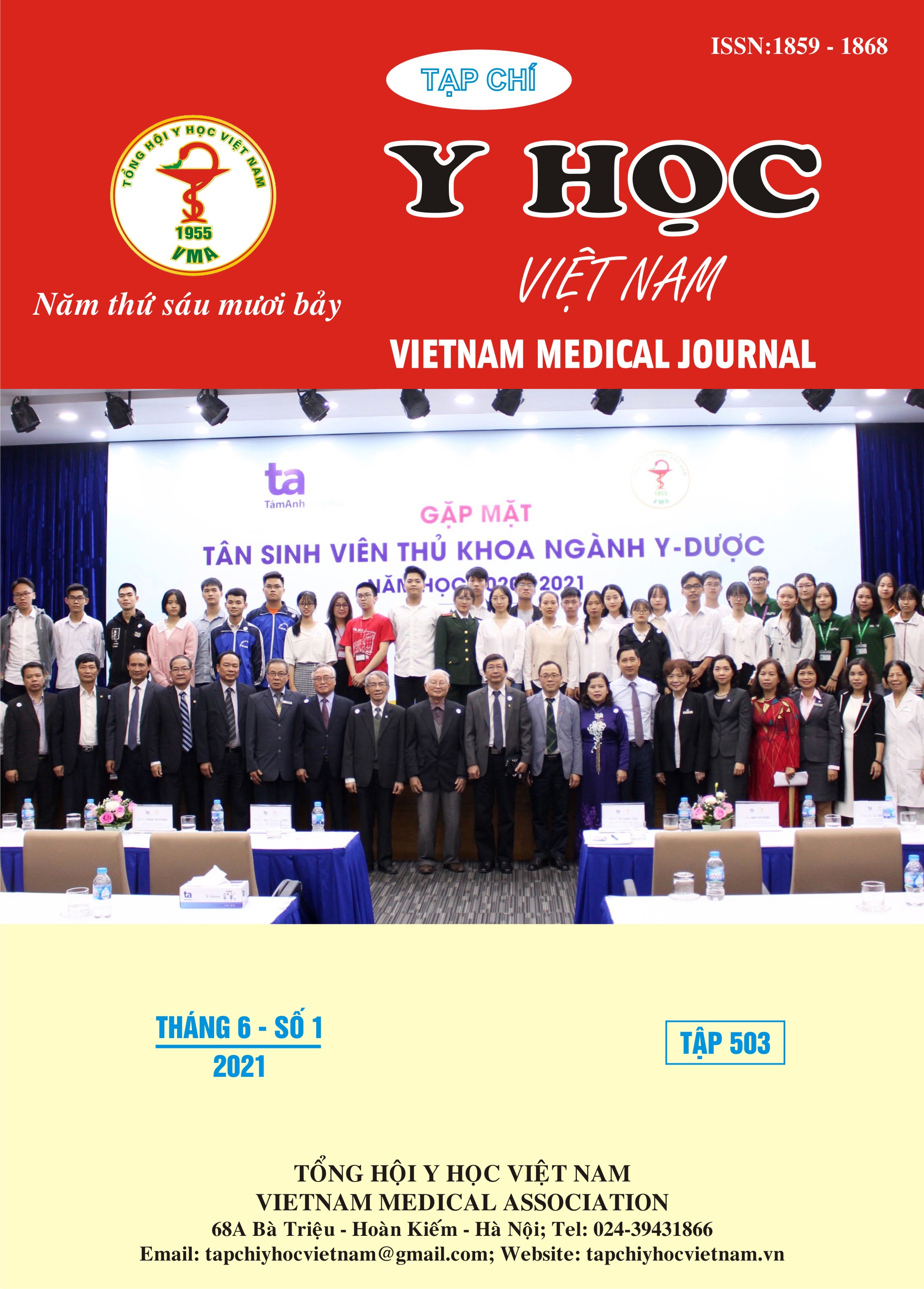CLINICAL CHARACTERISTICS AND FACTORS ASSOCIATED WITH MEASLES COMPLICATION IN CHILDREN AT CAN THO CHILDREN’S HOSPITAL
Main Article Content
Abstract
Background: Measles is an acute infectious disease caused by measles virus. The disease usually has a benign course, but measles complications are still high. The aim of this study was to describe the clinical features and identify factors associated with complicated measles in children. Methods and subjects: Cross-sectional description of cases of measles with Mac-Elisa IgM (+), hospitalized at The Can Tho Children's Hospital from 1/2020 to 6/2021 Result: A total of 144 children with measles aged 2-60 months, median age was 12 months, male accounted for 58%. Unvaccinated children accounted for 81.3%. Clinical symptoms included fever (100%), rash (100%), cough (97.9%), Koplik's spot (54.0%) and vomiting (29.2%). Two common complications were pneumonia (21.5%) and gastroenteritis (22.9%). Factors associated with complicated measles included unvaccinated (OR=5.57; p=0.022), increased CRP (OR=1.08; p=0.027) and vomiting (OR=3.05; p=0.036). Conclusion: Measles was common in unvaccinated children aged under 12 months. Pneumonia and gastroenteritis were 2 common complications. Unvaccinated, elevated CRP, and vomiting were the factors associated with complicated measles.
Article Details
Keywords
Measles, children, complication
References
2. Do LP, Van TTT, Nguyen DTM, et al. (2021) Epidemiological and molecular characteristics of a measles outbreak in northern Vietnam, 2013-2014. J Clin Virol;139:104840.
3. Kien VD, Van Minh H, Giang KB, et al (2017) Trends in childhood measles vaccination highlight socioeconomic inequalities in Vietnam. Int J Public Health. 62(Suppl 1):41-49.
4. Marufu T, Siziya S, Murugasampillay S, et al. (1997). Measles complications: the importance of their management in reducing mortality attributed to measles. Cent Afr J Med.;43(6):162-5.
5. Marufu T, Siziya S, Tshimanga M, et al. (2001) Factors associated with measles complications in Gweru, Zimbabwe. East Afr Med J.;78(3):135-8.
6. Gianniki M, Siahanidou T, Botsa E, et al. (2018) Measles epidemic in pediatric population in Greece during 2017-2018: Epidemiological, clinical characteristics and outcomes. PLoS One. 6(1):e0245512.
7. Javed N, Saqib MAN, Hassan Bullo MM, et al. (2019) Seroprevalence of transplacentally acquired Measles antibodies in unvaccinated infants at nine months of age and its relation to the feeding practices. BMC Infect Dis.;19(1):587.
8. Kondova IT, Milenkovic Z, Marinkovic SP, et al. (2013) Measles outbreak in Macedonia: epidemiological, clinical and laboratory findings and identification of susceptible cohorts. PLoS One.; 8(9):e74754.
9. Cherry JD, Zahn M. (2018) Clinical Characteristics of Measles in Previously Vaccinated and Unvaccinated Patients in California. Clin Infect Dis.; 67(9):1315-1319.


